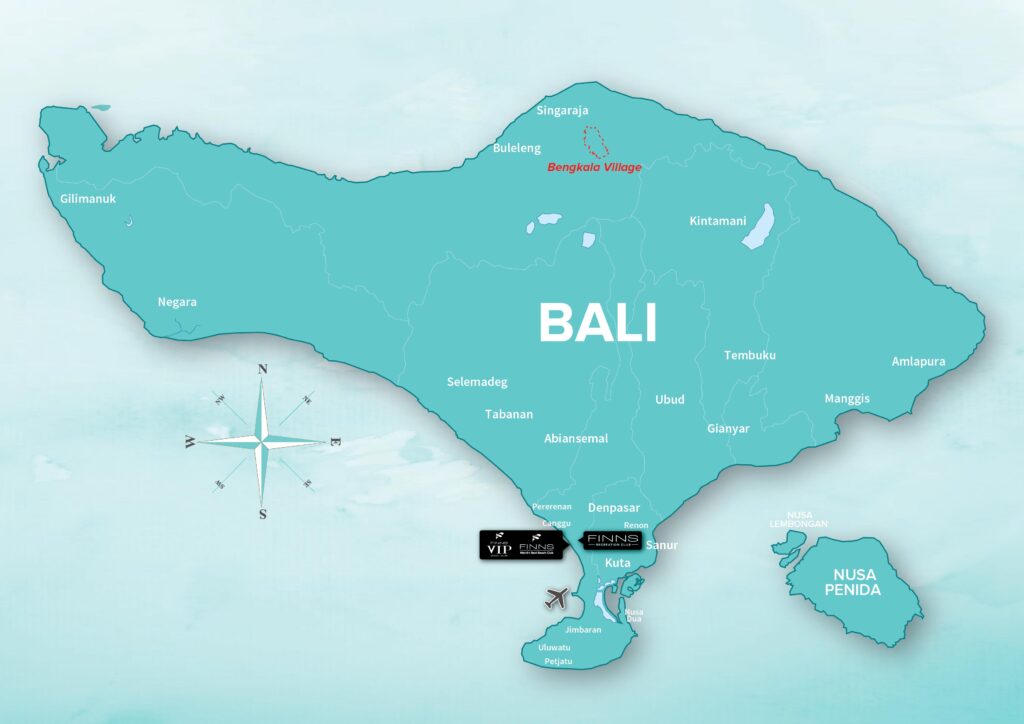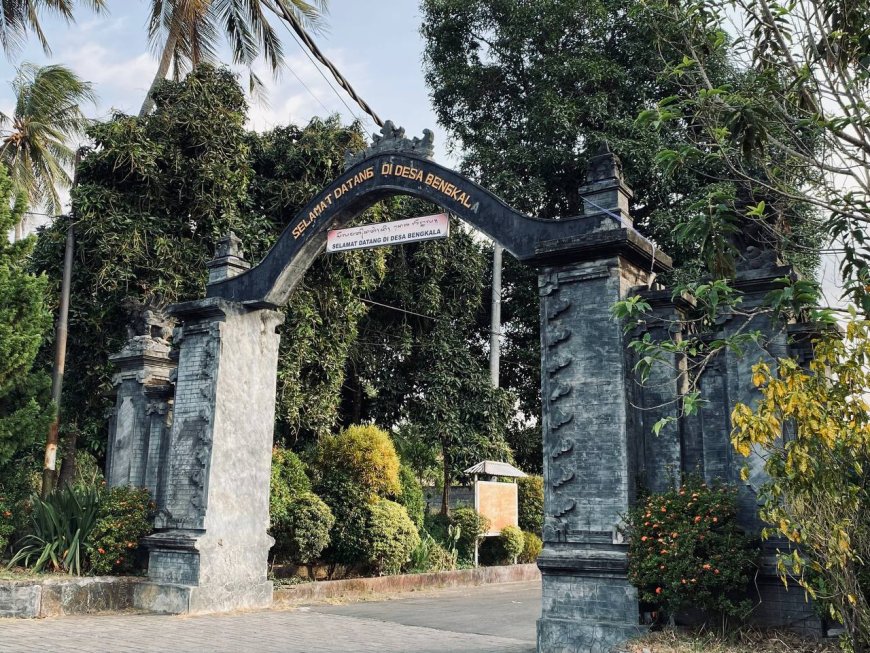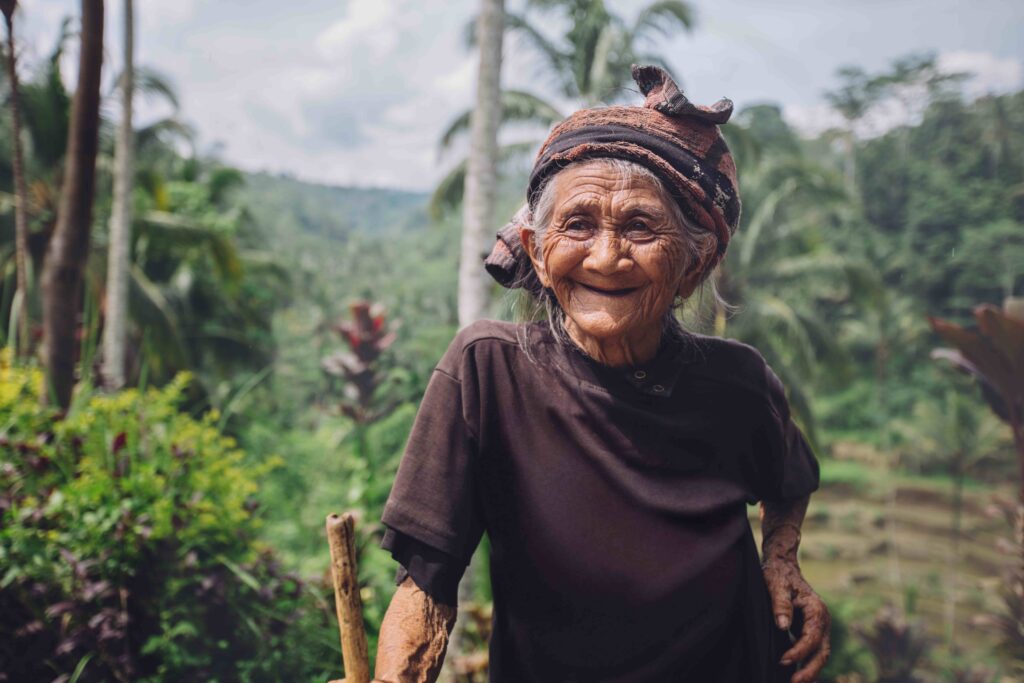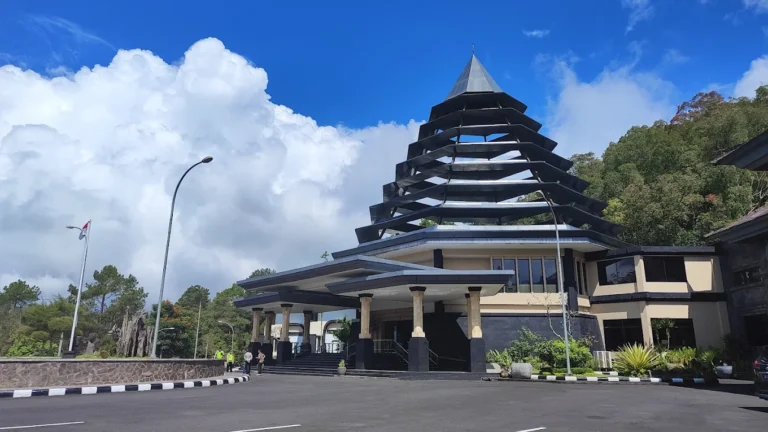Have you heard of the deaf village in Bali? Well, there’s more to Bengkala Village than you might know. Our guide explains everything about this incredible place.
Where Is Bengkala Village?

Bengkala Village and sometimes, Kolok Village (a name drawn from Kata Kolok “the talk of the deaf” a rural sign language that was developed for deaf students from the nearby deaf boarding school), is in the Buleleng Regency of Northern Bali.
How To Get To Bengkala Village

Getting to North Bali is relatively easy but we’d recommend that you hire a private car and driver (this isn’t expensive 500,000 IDR gets you a driver, car and petrol for 8 hours – that’s about $35 USD or $50 AUD) rather than relying on Grab or Gojek.
While the ride-sharing apps can definitely get you to your first destination in Northern Bali, you will find it’s pretty difficult to find a ride home again as there are very few drivers (if any) in the area.
If you do use a ride-share to travel to the village then we’d recommend doing a deal with them so that after you’ve met the local deaf people, taken time to understand the deaf lifestyle of deaf villagers in Bali and learned a little of the local sign language, they will take you on to your next destination.
If you do get stuck in Bengkala Village, we’d recommend popping into one of the local hotels to arrange an onward trip.
When Is The Best Time To Visit Bengkala Village

No, there’s no entrance fee to this village in North Bali but if you want a deaf guide to introduce you to the place, that will cost and you may need to arrange this service in advance of your visit depending on how busy things are on the day you visit.
The Legend Of Bengkala Village

The local legend is a famous story that a pair of witches with magic powers fought a battle over the village and during that fight, they cursed each other and made themselves deaf.
This, in turn, meant they passed on their deafness to their children and this continued to be handed down in varying degrees ever since.
Of course, today, we know that the local deafness, which does not affect all or even the majority of villagers, is caused by a geographically centric recessive gene rather than a curse.
This has led to the village becoming a very important place for deaf studies particularly as nearly everyone whether they are deaf or not in this village speaks sign language.
What To Expect At Bengkala Village
Bengkala Village is a welcoming place and the deaf and hearing community live alongside each other happily.
The deaf talk with other deaf people using a local sign language known as Kata Kolok. This is only used in two villages in Bali and even deaf tourists wil find it hard to follow at first.
The village residents have seen high rates of deafness for over seven generations, but their unique Indonesian sign language didn’t develop until about five generations past.
It is used in every aspect of village life now and this includes for political, religious, educational and professional life.
The signing space used by deaf villagers is very different from many other forms of sign language and when you are signing Kata Kolok you will make substantial use of references to cardinal points of the space.
This means the language used by deaf villagers is quite hard to learn for outsiders and to make things more complicated, linguistically it has nothing in common with Bahasa or Balinese either.
It’s the only sign language in the world that is currently relying on an absolut reference frame rather than a relative or intrinsic one.
You will also find that the deaf people here express themselves in their own unique cultural arts and you will see deaf dancers, deaf martial artists, etc. and they occupy important roles in the village social structure.
Also, interestingly, the local people in Bengkala Village share a belief in a single deaf god too!
Things To Do Near Bengkala Village
There are some interesting things to do in the local area including:
Pura Dalem Jagaraga Temple – its warder, a local man named Ketut, is always delighted to share the history of this fascinating and beautiful place.
Kerobokan Singaraja Beach – a very simple black sand beach with calm waters where even children can play or swim. There are some nice warungs on the shore too.
Beji temple – one of the most stunning and visually interesting temple complexes in Northern Bali.
Pantai Giri Emas – a wonderful local beach which is often used by divers during the day, at night the local food stalls are set up on the sand and you can find a seat and enjoy some fresh catch of the day.
Gedong Kiirtya – this is an incredible museum set up by the Dutch to preserve manuscripts and historic documents of Bali.
Where To Eat Near Bengkala Village
There aren’t a huge number of restaurants and cafes in this area and we’d advise packing snacks and drinks for your visit. Afterwards, these places are all within a short drive:
Agrowisata Lalangan – an excellent Indonesian restaurant attached to a campsite with a view over a local dam project.
LEKKER Food Court – we wouldn’t expect it to ever make the Michelin guide but this curious international restaurant is pretty good and it’s not expensive.
Sofiana Bakery – if you want sweet treats, this is a great place to pick up the softest, sweetest cakes in North Bali.
Mixue Sawan – this is a local ice cream parlour, it’s not Baskin Robbins by any stretch but the offerings are cheap and delicious.
Ack Fried Chicken – this is a local KFC clone and it offers takeaway food which is tasty and the service is excellent.
Where To Stay Near Bengkala Village
There is only one hotel in the village (the first on this list) and the others are a fairly decent drive away:
Kubu Astina – the most established hotel in the area in lush rice fields and with a unique charm.
Kolok Villa Bengkala – a nice local villa homestay project and run by some of the deaf folks from the village. Kota Kolak is spoken here.
Mas House Menyali – a basic villa in the rice fields with a lovely family feel to it.
Bali Local House Homestay – a super basic but comfortable residence where you can stay with locals.
Villa Ameithyst – a simple local homestay which is popular with some local expedition groups.
FAQs
Is True That Over Seven Generations Of People in Bengkala Village Only Use Sign Language to Communicate?
It is true that the entire community can use the local sign language preferred by Bengkala’s deaf population.
But while the hearing villagers teach themselves the sign language, they can also speak Bahasa and some hearing people can probably speak a second or third language too and some deaf people there will speak other sign languages as well.
Village life involves a lot of mutual respect for the deaf residents but a high percentage of day-to-day life is carried about by those with perfect hearing and thus, it makes sense for those people to talk to each other rather than sign.
Note: finding someone who speaks Balinese nowadays in this village or other villages is becoming rarer and rarer. Communication across the archipelago is easier in Bahasa rather than in local languages.
Which Is The World’s Cleanest Village In Bali?
It’s not the world’s cleanest village, that’s Giethoorn in the Netherlands which is Europe, not Asia.
But Penglipuran is the world’s third cleanest village and is in the Gianyar Regency of Bali.
Penglipuran is a popular tourist destination and it’s a testament to the Balinese for trying to maintain a traditional lifestyle that operates in harmony with the planet while trying to create a pleasant and welcoming space for modern visitors.
What Is The Most Remote Village In Bali?
We need to stress that Bali isn’t that big an island. So, there aren’t many places that really qualify as “remote” here.
The most remote place is probably Trunyan Village. That’s because Trunyan is culturally isolated (it’s home to the Bali Aga people who continue to lead traditional Balinese lives from pre-Hindu times).
It’s on the Eastern Shores of Lake Batur near Mount Abang. It can only be reached by boat or a very long treacherous hike in the jungle.
It’s famous as “Skull Island” because the people of Trunyan practice an unusual funeral custom where revered bodies are placed under a tree to rot rather than buried.
This may sound revolting but the presence of a unique tree in the village means that there’s no smell of decay and the process is far safer than you might think.
There are other Bali Aga villages around Bali and they too are fairly culturally isolated and each of them has a unique tradition that is not shared by the Balinese people or any other Bali Aga village.
How Many Villages Are There In Bali?
There are 716 villages in Bali. That is made up of 80 urban villages and 636 rural villages.
That means you could visit a new village every day for about 2 years without ever having to repeat a trip! Bali is a land of endless variety and its villages and villagers are the best way to get to know the culture of the island.
Final Thoughts On Bali’s Deaf Village And Indonesian Sign Language
Bengakala Village is a unique experience in Bali and while it is not true that everyone there is deaf, it is one of the few places in the developing world with a specific style of signed language and deaf people are not invisible people but fully functioning members of society.
To get the most out of a visit to this village, we’d recommend that you hire a guide you can help you navigate the linguistic mosaic and really enjoy this fascinating part of the island.













